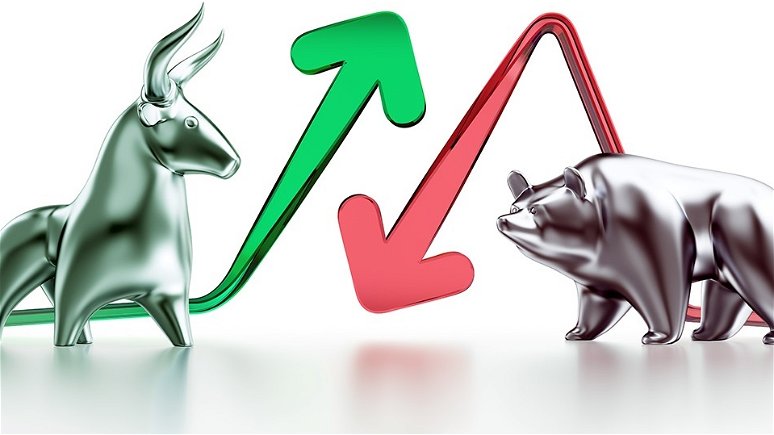Bullish vs. Bearish: What's the Difference? Published on Feb 24, 2020

Bull vs bear describes investment trends that have the power to impact the global financial markets. You’ve probably heard investors refer to a market as being either bearish or bullish based on negative or positive price movements. But what does it mean?
When the terms “bull market” or “bear market” are used by analysts, they’re describing either a pessimistic market (dropping or potentially dropping) or an optimistic one (rising or potentially rising). What separates bearish markets from bullish ones is the confidence of a price remaining high and rising, or remaining low and dropping. More to the point, the terms “bearish” and “bullish” describe the market’s actual state – specifically, if it’s losing value (downtrend) or gaining value (uptrend).
Why are they Called Bear & Bull Markets?
Bearish Vs. Bullish Explained
What is a Bull Market?
Traders' expectations, general optimism, and confidence in ongoing uptrends are the characteristics of bull markets. Such uptrends tend to last for a while (weeks, months, and even years) based on surrounding circumstances. Simply put, bull markets refer to a rising market, and investors believe that long-term uptrends will continue. For the most part, in these situations, employment levels and GDP remain high, and the economy of the country is strong.
What is a Bear Market?
Profit from Rising and Falling Markets
TRADE CFDs with INGOT Brokers
We offer CFDs across different asset classes including equities, indices, currency pairs, commodities, cryptocurrencies, and ETFs. Get started trading CFDs right away by opening a live account.
The terminology is in reference to how animals attack prey. For instance, bears stomp their paws on a prey, while bulls thrust their horns upward.
A bull market is a financial market (whether it’s currency pairs, shares, metals or commodities) where prices are rising or are expected to rise.
If the bull market describes growth and stability, the bear market represents the opposite: pessimism, loss on investments, and a usually regarded “weak” economy.
The market condition of bear markets is characterized by a pessimistic outlook and declining prices. Traders start selling (as opposed to buying) in an attempt to break free from losing positions. They are usually influenced by bleak economic news, as well as statistics like low employment rates. Moreover, psychology has a big impact on the bear market’s initial stage, since traders who think something bad will happen to take action and sell assets to protect themselves from losses.
In bear markets, an economy will generally slow down. Although people with “bearish outlooks” are people with pessimistic opinions, many expect such fluctuations to be short-term and look for signs of potential revivals.
When you trade Contract for Difference (CFDs), you will always have the option to go both long and short – so you can take advantage of markets that fall in price, as well as those that rise.
CFDs offer traders the opportunity to profit from price movement without owning the underlying asset.
CFDs are all about price speculation, where you can invest in high or low prices according to what you think is more likely to happen, be it a bearish market or a bullish one.



